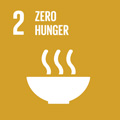- Docente: Brunella Morandi
- Credits: 6
- SSD: AGR/03
- Language: Italian
- Moduli: Brunella Morandi (Modulo Mod 1) Luigi Manfrini (Modulo Mod 2)
- Teaching Mode: In-person learning (entirely or partially) (Modulo Mod 1); In-person learning (entirely or partially) (Modulo Mod 2)
- Campus: Bologna
- Corso: Second cycle degree programme (LM) in Agricultural Sciences and Technologies (cod. 9235)
-
from Sep 16, 2025 to Oct 23, 2025
-
from Oct 09, 2025 to Dec 11, 2025
Learning outcomes
Students will learn concepts of: plant/environment interactions and consequences tree physiological performances; problems related to the main orchard management practices from fruit thinning to irrigation, to precision fruit growing and innovative orchaard management practices. They will also gather knowledge on the concept of quality of the horticultural products as well as the traditional and novel methodologies used for the determination of fruit organoleptic features.
Course contents
a) Prerequisites
Students taking this course must have a solid foundation in biology, botany, and basic physiology, with particular emphasis on the anatomy of xylem and phloem and the biochemical processes underlying photosynthesis. Students also have a basic understanding of organic and physical chemistry, allowing them to delve deeper into the interactions of tree canopies with the soil and atmosphere.
A knowledge of general arboriculture is also required. Any gaps in knowledge can be covered with the following texts:
Plant Physiology and Development by Lincoln Taiz, Ian Max Moller, Angus Murphy Piccin-Nuova Libraria
Silviero Sansavini, Riccardo Gucci, Paolo Inglese, Angelo Ramina, Cristos Xiloyannis, 2012. Arboricoltura Generale. Patron Editore Bologna
b) Teaching Units
Tree Physiology Module (Lectures: 18 hours)
Tree Water Relations:
Water potential, water transport in the xylem, and hydraulic conductivity. Effect of crop management and environmental conditions on water relations.
Tree-light relations:
Physical properties;
Methods of light measurement;
Effect of cultural practices on plant-light interaction;
Orchard design.
Photosynthetic efficiency:
Photosynthesis – why and how to measure it;
Photosynthetic parameters;
Environmental effects on photosynthesis;
Excess light and its consequences on photosynthetic performance;
Fruit growth:
Definition;
Measured parameters and their relevance to describing the phenomenon;
Sampling methods and data processing;
Fruit growth models;
Cell dynamics and fruit growth;
The effect of thinning timing and intensity on fruit growth;
Material flows that govern fruit growth:
measurement methods;
Xylem contribution to fruit development;
Phloem contribution to fruit development;
Transpiration contribution to fruit growth;
Growth physiology of peach, apple, kiwi, pear, and cherry trees
Precision fruit growing:
Theoretical foundations;
Analytical approaches;
Module: Fruit Quality Evaluation (Lectures: 18 hours)
Definition of quality and the aspects that contribute to it: marketability, pomological, health, wholesomeness, marketing, service.
Quality levels of fruit products.
Quality classification methods: physical, chemical, biometric, and appearance parameters.
Main cultivation techniques that influence fruit quality: pruning, nutrition, use of bioregulators.
Ripening and ripening. Description of the phenomenon, climacteric and non-climacteric fruits. Bioregulators that influence ripening and ethylene emission.
Analytical methods for evaluating the main quality parameters (color, soluble solids content, acidity, starch, firmness, etc.): destructive (instruments - penetrometer, refractometer, etc. - and methodologies employed and use of readings); non-destructive (X-rays, magnetic resonance, light reflectance and transmittance, laser, etc.). Use of the determined parameters: definition of harvest times, definition of ripening stage.
Supplementary activities (24 hours)
- Field exercises for learning photosynthesis and water potential measurements and the related data analysis
- Group work and data analysis of the main physiological and quality parameters of fruit
- Tests to evaluate the acceptability of fruit by consumers: preference tests and sensory evaluation methods (panel tests).
- Organization of student seminars on topics related to tree physiology and fruit quality.
- Fruit Quality Technology Laboratory
Readings/Bibliography
Lecture notes, handouts and articles provided by the instructor through internet services managed by UNIBO.
Teaching methods
The course is divided into lectures, which account for 60% of the classroom hours, while 40% of the hours are dedicated to practical activities and exercises.
These consist of field trips to the farm's experimental fields, use of the main instruments for physiological measurements, group work and seminars held in the classroom, and laboratory activities at the Cadriano Experimental Teaching Center.
The instructor is available to discuss any student needs to ensure all interested parties can fully participate in the lessons.
Assessment methods
Learning assessment is conducted jointly across all modules. Specifically, the learning assessment for the "Physiology of Trees and Fruit Quality" module takes into account:
i) the student's level of knowledge and skills acquired in relation to the program content;
ii) the student's ability to critically and thoughtfully connect different parts of the program;
iii) the student's ability to navigate the issues related to fruit tree management and fruit quality assessment, as well as their ability to identify potential solutions to these issues.
Learning assessment and evaluation is conducted through an oral exam, according to the curriculum calendar. The exam will cover at least four of the teaching units covered in the program
Teaching tools
Classroom lectures are provided with the aid of visuals. Practicuums are offered in the classroom, focused on the determination of physiological parameter by use of portable instrumentation. On occasion, seminars may be offered by visiting professors from other institutions, to integrate the instructor's lectures.
Office hours
See the website of Brunella Morandi
See the website of Luigi Manfrini
SDGs




This teaching activity contributes to the achievement of the Sustainable Development Goals of the UN 2030 Agenda.
